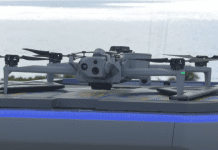
Waves are an inevitable part of sailing and if handled appropriately, they can be a valuable ally when it comes time to pop the chute and sail downwind. Here are Quantum expert Dave Flynn’s tips for managing waves for optimum performance to help you make up time on a downwind leg, or get to your favorite mooring ahead of the crowd.
Effective sailing downwind is all about constant pressure. The more constant it holds, the less overall pressure you will need to maintain speed. The trick to this efficient speed is to avoid cycling between too much pressure and not enough and making all the right responses but overcorrecting until the driver and trimmer are locked in a vicious game of chasing their tails.
Since you can’t sail straight downwind in light to moderate conditions you head up until there is pressure in the spinnaker and pull on the sheet. It’s also important to remember that the optimum angle changes as a function of velocity. Taking it a step further, seasoned sailors (especially racers) have figured out the best angles for various conditions; when it pays to head up (the lulls), when it pays to sail low (the puffs). One subtle factor often not included in this equation is wave angle.
This is particularly important in moderate conditions when there are waves, but not quite enough breeze for full-time surfing. What happens is this: On one gybe, heating up in the lulls is no problem, but on the other tack, heading up for more pressure puts the boat more parallel to the waves. The boat rolls more, causing spinnaker instability. The helmsperson and the trimmer don’t like what they feel and head up further. The net result is a loss in VMG (Velocity Made Good), because you have to sail well above optimum angles to get the boat and the spinnaker to feel pressured up.
Bearing off and sailing at a slightly lower angle puts the boat more in line with the waves. A steadier ride is a result. Remember, steady state, steady flow (pressure) is the key downwind. Lock in, and the waves will help. You might not exactly be “surfing” in the classic sense, but you will be getting small rides as the waves push the boat. These rides keep the speed up, (and consequently the apparent wind velocity).
Subtle steering (keep the range small) can help make big gains to leeward if the combination of a small puff and a wave can be put together. Recognition of the wave pattern’s effect on angles can be particularly critical when trying to hold a lane. It can keep one from heading up right into the weather boat’s bad air. Remember, I am not suggesting low and slow, but a steadier ride and more constant pressure by riding with the waves instead of letting them roll the boat. It is really about using the waves to help maintain a steady platform and constant pressure.
This article originally appeared in SpinnSheet Magazine in June 2017.
For more great sailing tips and tricks or to learn about Quantum Sails, visit www.QuantumSails.com.





